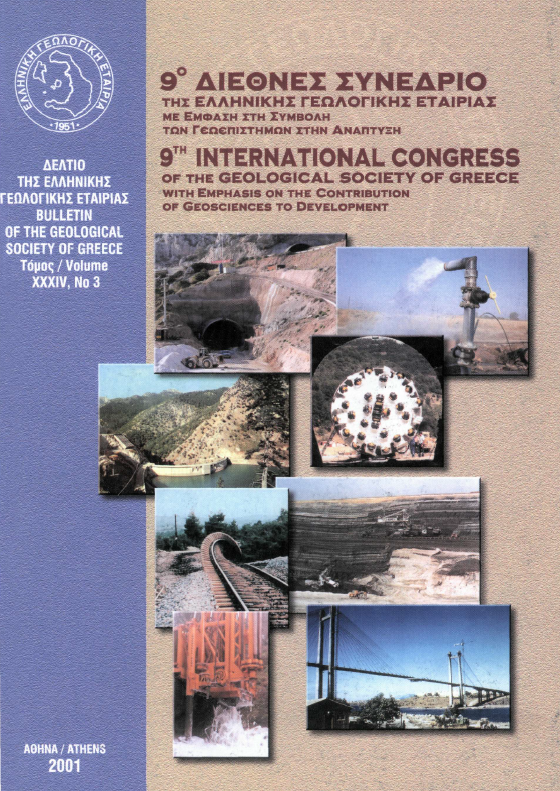EPITHERMAL MANGANESE MINERALIZATION, KIMOLOS ISLAND, SOUTH AEGEAN VOLCANIC ARC, GREECE

Abstract
Manganese mineralization is hosted by a marine monomictic, lithic volcaniclastic breccia, possibly an andesitic in situ hyaloclastite, and shallow-marine or subaerial epiclastic conglomerates, in the Korakies area, NE Kimolos, active south Aegean volcanic arc. Old mine workings (in the form of rubble, adit and shaft), and abandoned rail and ship loading facilities, exist in the area. Mineralization occurs as a quartz/chalcedony vein system filling extensional NNE-SSW–trending faults and fractures, of Pliocene age. Maximum vein width reaches 5 m; length may extend to 250 m. The ore shares strong textural analogies with volcanic-hosted epithermal-style deposits, i.e. crustiform banding, vugs, hydrothermal breccias, cockade and comb textures. Vein wall rocks are hydrothermally altered to quartz-adularia±illite, chlorite and barite. Pyrolusite, hollandite, cryptomelane, and coronadite are the main ore minerals, with quartz, chalcedony, jasper and barite gangue. Ore samples contain up to 25.8 % MnO2, 14.7 % FeOTOT, 2860 ppm Zn, 1132 ppm Pb and 136 ppm Cu; Mn and Zn show mutual positive correlation (r2=0.61). Trace element enrichment (i.e. Zn, Pb, and Cu) may suggest a proximal base metal sulfide mineralization. Concentrations of 4.3 % Na, 0.09 % Mg and barite presence may suggest genetic involvement of sea water. The mineralization studied is similar to volcanic-hosted low-sulfidation epithermal ore deposits deposited from neutral pH fluids. This is a rare example of a vein-type epithermal-style hydrothermal manganese deposit formed in a marine environment.
Article Details
- How to Cite
-
Lykakis, N., & Kilias, S. P. (2010). EPITHERMAL MANGANESE MINERALIZATION, KIMOLOS ISLAND, SOUTH AEGEAN VOLCANIC ARC, GREECE. Bulletin of the Geological Society of Greece, 43(5), 2646–2656. https://doi.org/10.12681/bgsg.11672
- Section
- Petrology and Mineralogy

This work is licensed under a Creative Commons Attribution-NonCommercial 4.0 International License.
Authors who publish with this journal agree to the following terms:
Authors retain copyright and grant the journal right of first publication with the work simultaneously licensed under a Creative Commons Attribution Non-Commercial License that allows others to share the work with an acknowledgement of the work's authorship and initial publication in this journal.
Authors are able to enter into separate, additional contractual arrangements for the non-exclusive distribution of the journal's published version of the work (e.g. post it to an institutional repository or publish it in a book), with an acknowledgement of its initial publication in this journal. Authors are permitted and encouraged to post their work online (preferably in institutional repositories or on their website) prior to and during the submission process, as it can lead to productive exchanges, as well as earlier and greater citation of published work.



